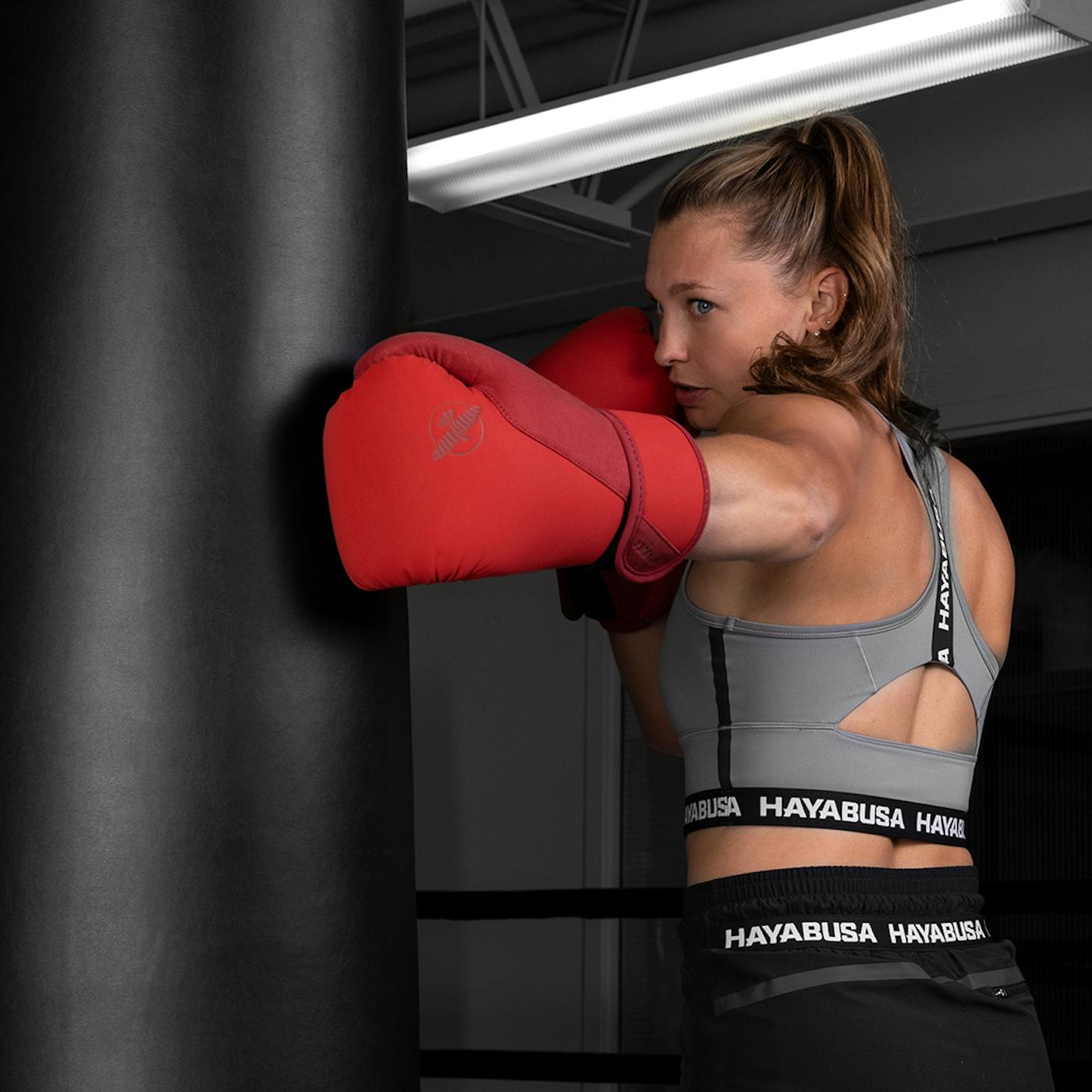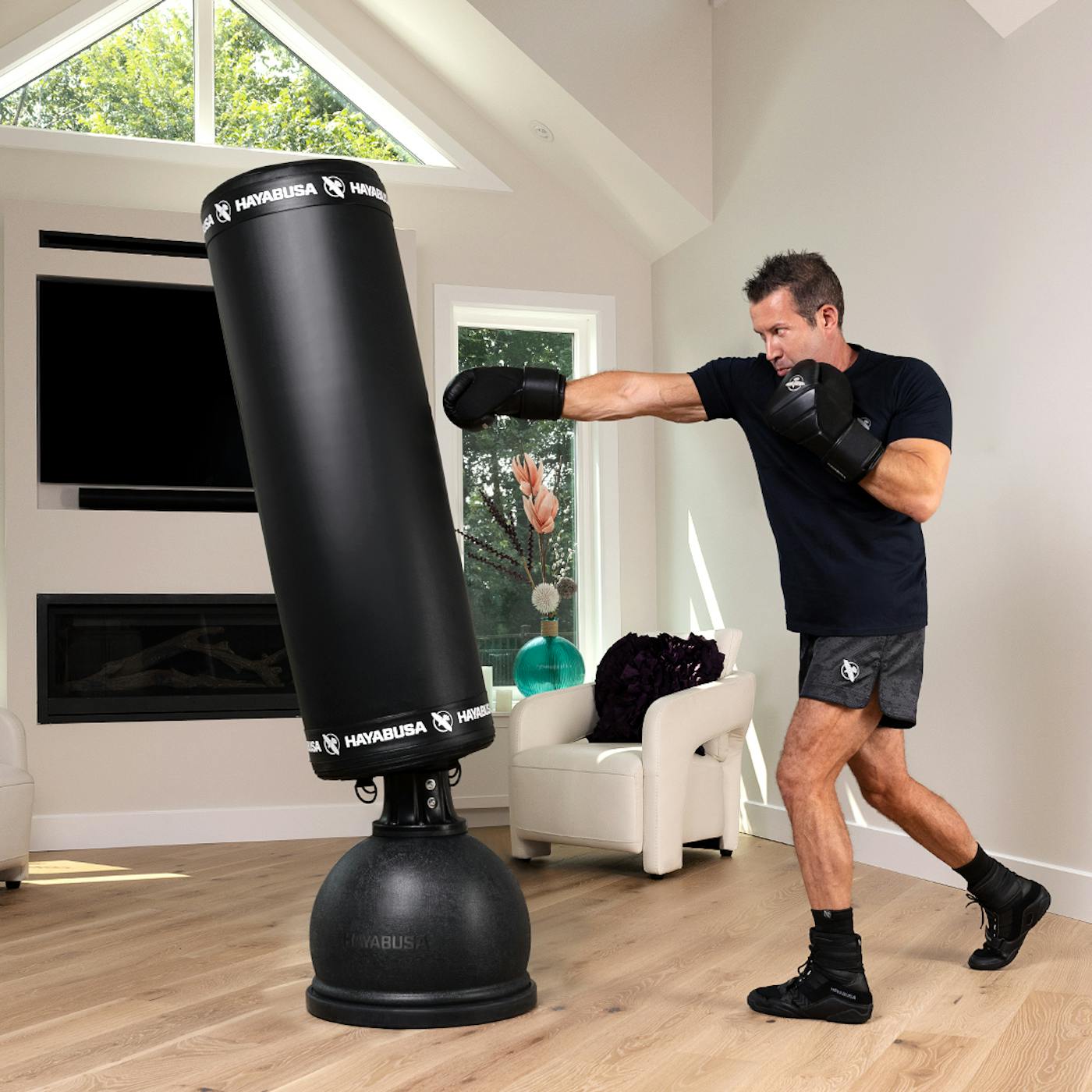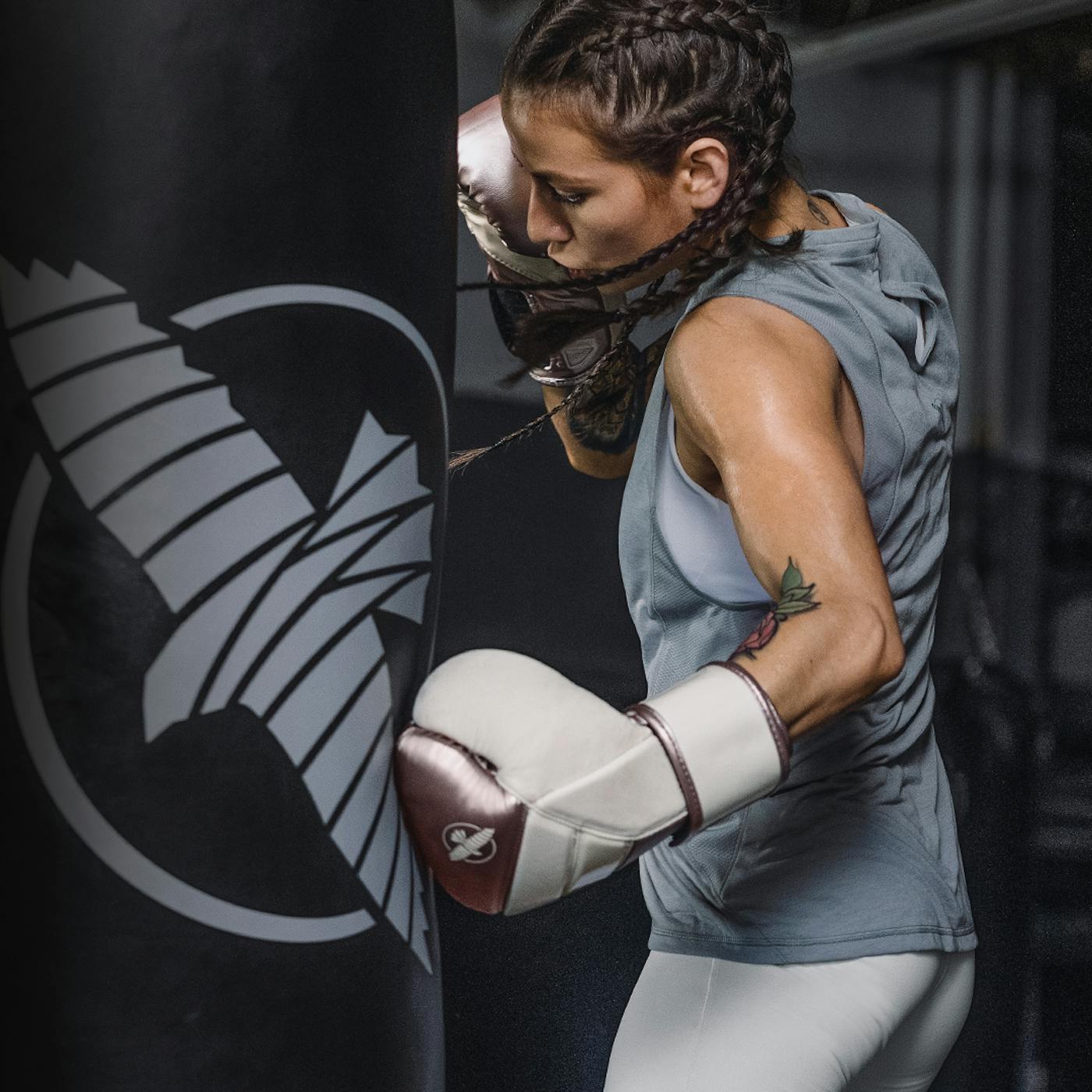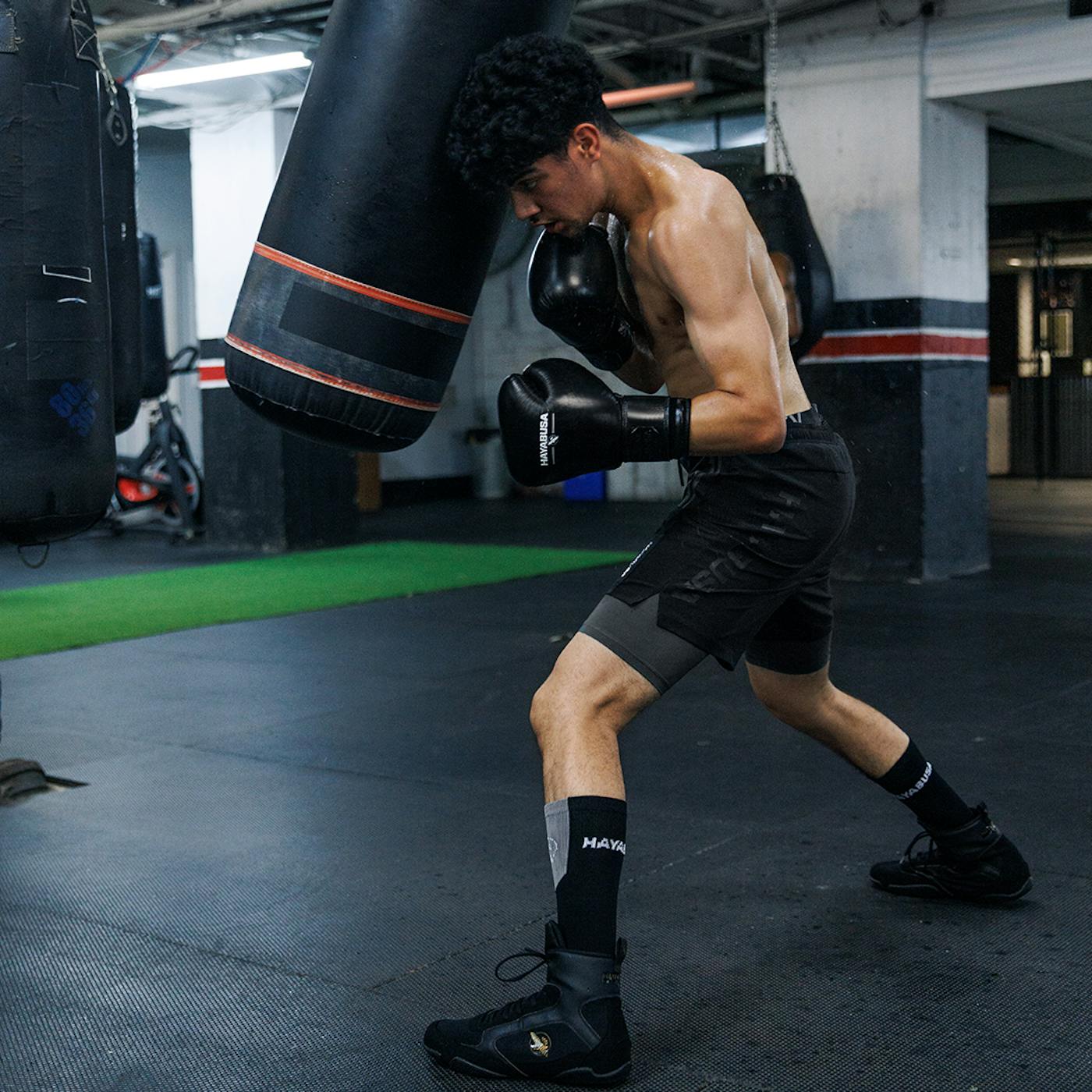Every punching bag needs a good filler. But deciding which type is best is up to you.
The filler impacts how the bag feels when landing punches, its durability, and the overall training experience.
Let’s look at the two main punching bag filling options, water and sand, and the pros and cons of both to help you determine which benefits your boxing training most.
Overview of Punching Bag Filling Options
You may wonder, why choose a fillable punching bag versus one that’s pre-filled? The advantage of a fillable punching bag is that it can be customized to a specific weight and density.
This allows athletes to adjust as needed to add more resistance and impact absorption as their training calls for.
The two main bag fillers are water and sand, though there are alternatives, such as pellets, rice, and air. Each has its own pros and cons to consider when deciding which one is the better fit.
However, we’ll review the two most common.

Punching Bag with Water: Pros & Cons
Benefits of Using Water as a Filler
Natural Resistance – Water absorbs strikes better than sand, which means the resistance better emulates what it feels like sparring with a real-life opponent.
Softer Impact – Fighters who choose a punching bag with water appreciate the alleviated stress on their wrists, knuckles, and elbows when landing strikes.
Easily Adjustable – Changing the weight and density of the bag is as simple as adding or removing water. This is ideal for those who use heavy bags in their at-home gyms.
Portability – Also, for a home boxing setup, it’s easier to move a water-filled bag since you can drain and move it as needed.
Drawbacks of Water-Filled Punching Bags
Less Stability – Depending on the strength of your strikes, a water-filled bag doesn’t hold quite as much stability as sand and can cause freestanding punching bags to constantly move out of position.
Risk of Leaks – A punching bag with water means the chance of leaks, especially as the exterior becomes damaged or weakened. Regular maintenance is important for punching bag care to keep an eye out for even the smallest cracks or holes.
Lighter Weight – Though it’s not necessarily a drawback, depending on your training style, water doesn’t provide the level of resistance sand does, so it may be less effective when practicing power punches.
Punching Bag with Sand: Pros & Cons
Benefits of Using Sand as a Filler
Better Stability – When extra weight is desired, a punching bag with sand is the preferred option and helps keep the bag grounded during hard strikes.
Minimized Shifting – There’s less of a swing when executing power punches and kicks to the bag, which helps build resistance during strength training.
Reduced Risk of Leaks – Sand can still spill out when punctured, though possibly creating less of a mess compared to water.
Denser Feel – To build resistance during strength training, the denser weight of a sand-filled heavy bag is more effective than a water-filled one.
Drawbacks of Sand-Filled Punching Bags
Harder on Hands – There is more strain on the knuckles and joints with sand-filled punching bags because they absorb less impact.
Not Easily Adjustable – It’s not as simple to adjust the weight or move a sand-filled bag, which could make it inconvenient, particularly for at-home gym users.
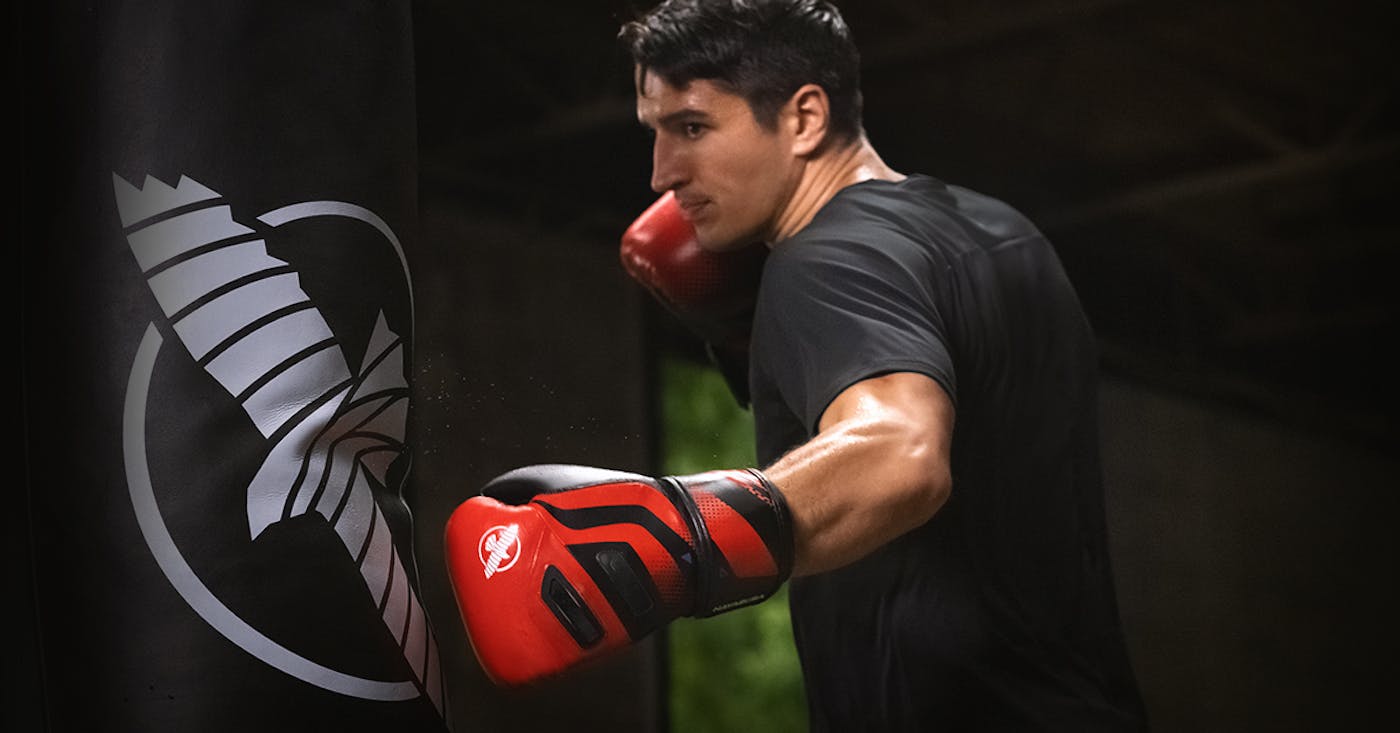
Frequently Asked Questions About Fillable Punching Bags
Can I Mix Water and Sand in My Punching Bag?
Yes! A combination of the two fillers offers extra weight and stability for greater shock absorption upon impact.
Which Punching Bag is Better for Outdoor Use?
Of the two heavy bag filling options, sand works best for outside since temperature changes can cause a water bag to freeze, expand, and potentially rip or damage the exterior.
Which Bag Is the Better Option for Beginners?
A punching bag with water offers a softer impact for those developing proper technique and punch strength, making it ideal for beginners. Whereas, sand is the best punching bag filling for seasoned fighters who are focused on building endurance and strength against firmer resistance.
Hayabusa Heavy Bag
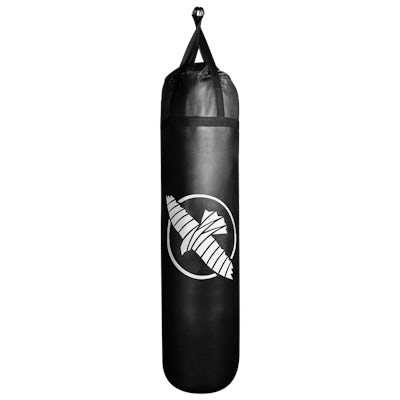
Hayabusa Double End Bag

Hayabusa Cobra Reflex Bag

Hayabusa 70lb Classic Heavy Bag

Find the Perfect Punching Bag for Your Training
When evaluating the pros and cons of water vs. sand for punching bags, determine which is best for your training purposes.
Beginners benefit from the extra joint protection of water-filled bags. However, a punching bag with sand offers up more stability and resistance for repetitive striking and power punches.
Additionally, the portability and weight adjustability of water-filled punching bags are ideal for at-home gym setups. However, a sand-filled heavy bag can keep the workouts consistent regardless of whether you’re at home or the boxing gym.
Either way, stick with punching bags known for their durable exteriors and always use equally indestructible boxing gloves to give it your all every time you train.
